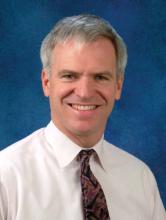Many areas of the United States have few or no practicing adult rheumatologists, and in some cases – particularly in smaller "micropolitan" areas – the closest practicing rheumatologist is 200 miles away, according to an analysis of U.S. Census data and information from the American College of Rheumatology membership database.
Patients with chronic rheumatic conditions in these areas likely have limited access to rheumatology care, reported Dr. John D. FitzGerald of the University of California, Los Angeles, and his colleagues. The authors are members of the American College of Rheumatology (ACR) Committee on Rheumatology Training and Workforce Issues.
These findings come in the wake of an American College of Rheumatology workforce study initiated in 2005, which showed that demand for rheumatologic care at that time was in balance with the supply of adult rheumatologists (with an estimated 1.67 rheumatologists per 100,000 persons), but which predicted that demand would outstrip supply over time, leading to a shortage of 2,500 adult rheumatologists by 2025. The ACR responded to that report by increasing funding for the training of new rheumatologists by targeting programs with unfilled Accreditation Council for Graduate Medical Education slots, the investigators said.
They noted, however, that the national estimates did not consider regional variation in the distribution of rheumatologists. "Clustering of rheumatologists in some regions can leave other areas of the country with too few adult rheumatologists in supply," wrote Dr. FitzGerald and his associates, who mapped all adult practicing rheumatologists’ addresses as recorded in the 2010 ACR membership database, and assessed the number of rheumatologists in Core Based Statistical Areas (CBSAs), commonly referred to as micropolitan and metropolitan areas. CBSAs are "defined by regions with a high degree of social and economic integration (determined by commute to work) around a central urban core," they said.
The findings of the current study demonstrate that regional shortages already exist. "If we simply use the 1.67 number of rheumatologists per 100,000 persons as a definition of insufficient rheumatology supply, then a majority (85%) of the CBSAs would be potentially underserved," the investigators noted.
When a definition of no practicing rheumatologists within a 50-mile travel distance is used, 24% of CBSAs – representing 18.9 million persons – would still be affected by an insufficient supply of rheumatologists; with a 100-mile cut point, 5% of CBSAs –representing 2.5 million people – would be underserved.
"While this is no surprise to affected local patients, practitioners, or policy makers, this study identifies potential target communities ... that might benefit most from addition of a local rheumatologist," the investigators noted.
One possible intervention for addressing the shortage is simply providing up-to-date information about shortages, as this could lead to migration, expansion of existing practices, or attraction of new rheumatologists. Increasing the supply of trainees in areas with unmet needs and committing additional funds to training programs in underserved areas are also possible interventions, the authors said.
Approaches such as the use of traveling clinics and e-mail or video consultation, which have previously been used to address shortages in rural areas, could also be helpful, they said, adding that it has been suggested that midlevel providers could also effectively help fill workforce shortages.
According to the ACR database, there were 3,920 practicing adult rheumatologists in 2010; 90% practiced in metropolitan areas (areas with at least 50,000 population around a central urban core), 3% practiced in micropolitan areas (areas with 10,000 to less than 50,000 population, excluding rare exceptions centered around a less dense urban cluster), and 7% practiced in rural regions.
"Notably, a greater proportion of rheumatologists were practicing in metropolitan areas (over micropolitan areas) than would be expected based on population distribution alone. While only 31 metropolitan areas (9%) did not have a practicing member rheumatologist, the majority of micropolitan areas (84%) did not have a rheumatologist," the investigators wrote.
As for areas with no rheumatologist, the distances to the nearest practicing rheumatologist varied widely. Only 1% of metropolitan areas, compared with 16% of micropolitan areas, had a distance of more than 75 miles to the nearest rheumatologist, and CBSAs with populations over 200,000 had a travel distance as great as 94 miles, while some smaller micropolitan regions had travel distances greater than 200 miles, for example.
Many smaller micropolitan areas with populations of at least 40,000 had no practicing rheumatologists, and several more populous areas with populations of 200,000 or more also had no practicing rheumatologist.
Conversely, areas with higher population densities; greater proportions of younger, female, white, and Asian populations; and the presence of an active adult fellowship training program had greater numbers of rheumatologists (Arthritis Rheum. 2013 Nov. 27 [doi:10.1002/art.38167]).


